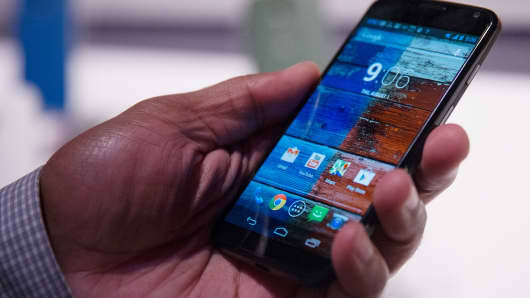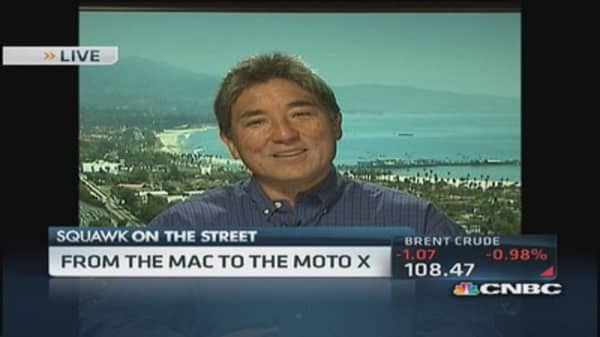Motorola Mobility's Moto X is all about Google redefining the "true Android experience," and, hopefully, making some money too, experts say.
When consumers think of an Android phone, they usually associate it with their experience using Samsung's flagship Galaxy smartphones, and that doesn't exactly sit well with Google, which owns the Android platform, said Carolina Milanesi, a vice president of research on Gartner's consumer devices team.
(Read more: Why the Moto X is a long shot for Google)
Basically, Google wants to be the only device maker that can give consumers the real Android experience, she said.
"It is the first step towards a true Android experience and continues to stick to the Google ecosystem," Milanesi said. "That, to me, is what's interesting. That is, as Samsung has become the leader in the Droid space, the threat or concerns it might make with its Galaxy devices has us asking are we at a point where Google needs to be more aggressive in establishing what the Android experience is?"
The answer to that question is yes, Milanesi said.
(Read more: Moto X is winning customization battle in the cellphone arms race)
When Google purchased Motorola last year for $12.5 billion, it wasn't just buying the phone maker's intellectual property, she said. It was looking to buy a company that could help it expand users of the Google ecosystem and redefine the Android product as its own.
"They want to, in my view, really establish a Google experience. This is what the Moto X does," Milanesi said.
One sign Google's strategy with Moto X is really about the company having more control over the Android experience is that the most notable feature of the new smartphone—its hands-free voice-capability function—is exclusive to Moto X and not available on any other Android smartphones, she said.
The voice feature allows users to perform tasks on their smartphone by simply talking to it. For example, a user could say, "OK Google, find the nearest grocery store" and the phone would pull up directions.
But this is not something that Google wants to share with other devices running on the operating system because it wants to redefine and own what the true Android experience is, Milanesi said.
"If you are looking at the offering, the voice feature doesn't have open APIs, which means as a developer you can't tag on to it. It does not come with any out-of-the-box Android," she said. "So you have the Moto X experience that will come out as the real Android experience. This allows them to control what features they keep for themselves, as well."
And having exclusive features on the Moto X might help Google finally cash in on Android.
Google bought Android in 2005 and has since invested heavily in the platform. The open-source nature of the software allows it to be freely modified and distributed by device makers, like Samsung and Amazon. And while it's the most widely used smartphone platform, it hasn't been the most profitable for the company, Milanesi said. The Moto X, though, could be a way for Google to change that, she added.
"Android's internal contribution to Google has not been as great of a return on investment," she said. "The Moto X could be part of Google strategy to start really monetizing Android by offering that exclusive experience."
But just because Google wants to redefine the "true" Android experience, that doesn't necessarily give the company a foothold in the smartphone market.





